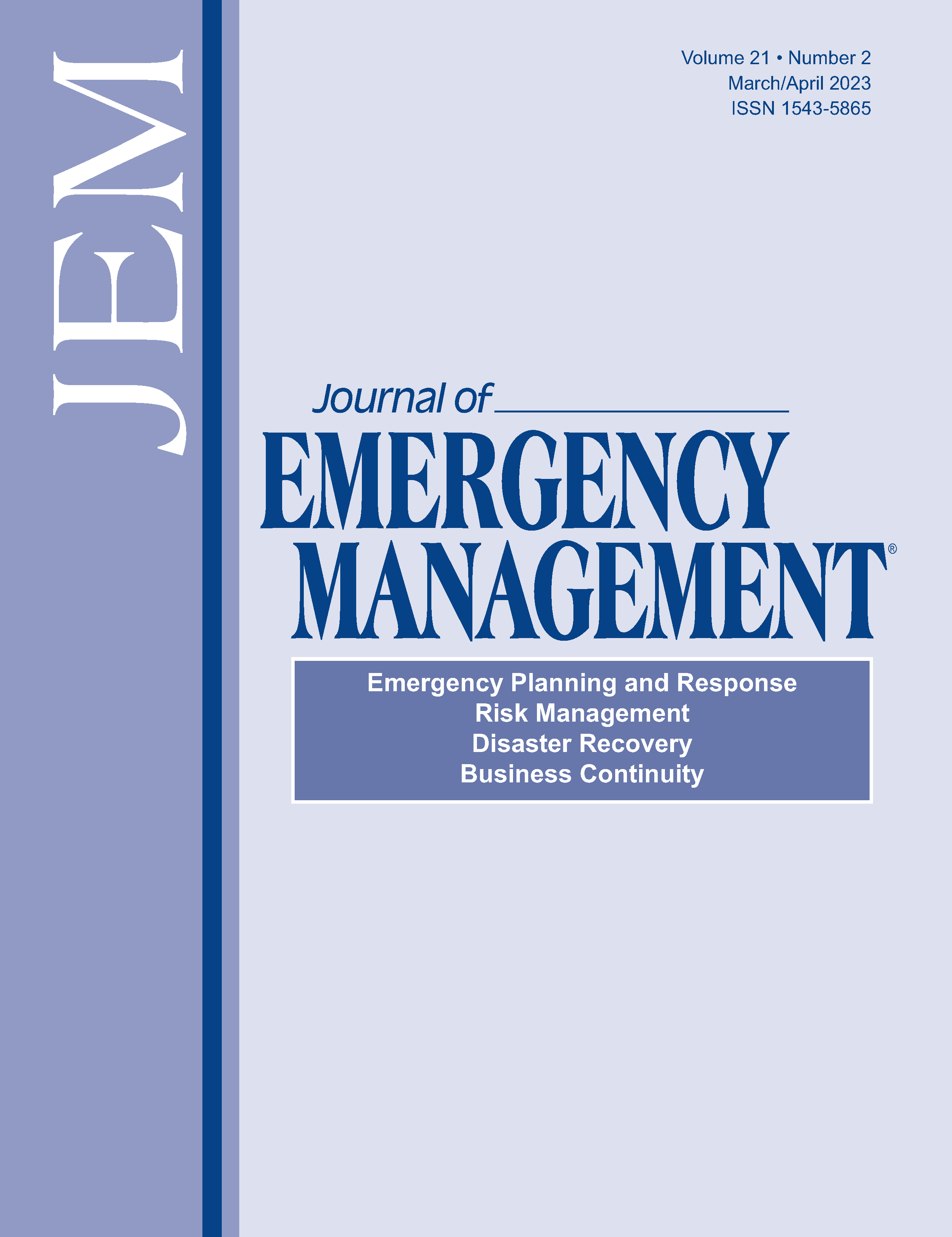Individual emergency response and recovery: What people worried about during and after Hurricane Maria
DOI:
https://doi.org/10.5055/jem.0747Keywords:
Hurricane Maria, hurricane responseAbstract
Hurricane Maria was a disastrous weather event that devastated Puerto Rico (PR) in September 2017. Yet, little is known about people’s perceptions of this event. In this investigation, we offer insight about Hurricane Maria’s impact on PR’s inhabitants. More specifically, we study a sample (n = 542 responses) of individuals’ worry levels through four time points during the aftermath of Hurricane Maria: their variation through time, their relationship to decision making, and if and how certain demographic variables may influence them. For these purposes, we designed and implemented the Individual Emergency Response and Recovery Questionnaire, a web-based survey that measured several aspects of the objective and subjective experiences of individuals who underwent Hurricane Maria in PR. Results of a statistical analysis using nonparametric tests show that some of the demographic variables selected as factors of interest influence the worry levels reported by respondents. Most significant results coincide with conclusions drawn by literature: that time, age group, and the level of information influence worry levels. Another key finding is that the worry level may influence individual decision-making frequency. Understanding principal factors in people’s behavior and perceptions during hurricanes is crucial to help us learn how to better prepare for and respond to natural disasters in the future.
References
Pasch RJ, Penny AB, Berg R: National hurricane center tropical cyclone report: Hurricane Maria (AL152017). National Hurricane Center. 2019.
Jervis R: Hurricane Maria aftermath: Puerto Rico battles epic flooding. USA Today. September 22, 2017. Available at https://www.usatoday.com/story/news/world/2017/09/22/hurricane-maria-aftermath-puerto-rico-battles-floods/692251001/. Accessed May 13, 2021.
Campbell AF: It took 11 months to restore power to Puerto Rico after Hurricane Maria. A similar crisis could happen again [internet]. Vox. 2018. Available at https://www.vox.com/identities/2018/8/15/17692414/puerto-rico-power-electricity-restored-hurricane-maria. Accessed May 13, 2021.
Costliest US: Tropical cyclones [internet]. Noaa.gov. Available at https://www.ncdc.noaa.gov/billions/dcmi.pdf. Accessed May 13, 2021.
Diaz V, González F, Isaza C, et al.: Individual response and recovery: A learning experience from Hurricane Maria. J Emerg Manag. 2021; DOI: 10.5055/jem.0548.
Borkovec TD, Robinson E, Pruzinsky T, et al.: Preliminary exploration of worry: Some characteristics and processes. Behav Res Ther. 1983; 21(1): 9-16.
Metzger RL, Miller ML, Cohen M, et al.: Worry changes decision making: The effect of negative thoughts on cognitive processing. J Clin Psychol. 1990; 46(1): 78-88.
Fritz CE, Marks ES: The NORC studies of human behavior in disaster. J Soc Issues. 1954; 10(3): 26-41.
Topuertorico.org: Puerto Rico’s regions and cities [internet]. Available at https://welcome.topuertorico.org/city/region.shtml. Accessed March 4, 2021.
DeVellis RF: Scale Development: Theory and Applications. 2nd ed. Thousand Oaks, CA: Sage, 2003.
Corder GW, Foreman DI: Nonparametric Statistics: A Step-by-Step Approach. Hoboken, NJ: Wiley, 2014.
Published
How to Cite
Issue
Section
License
Copyright 2007-2025, Weston Medical Publishing, LLC and Journal of Emergency Management. All Rights Reserved.






